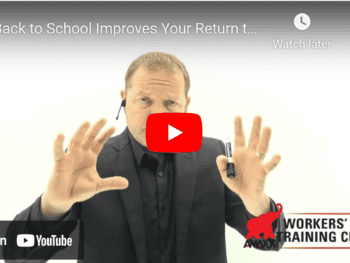You have implemented a corporate return-to-work program, but your projected workers’ compensation savings haven’t yet materialized. Supervisors are telling you they can’t get employees back to work, and even if they could they don’t WANT them to return to work. We’ve all heard it. It may be time to examine the impact of collateral resources, often resulting in employees out on workers compensation receiving more income and benefits than they would have if they were working.
Common Disincentives to Returning to Work:
- Salary and Wage Continuation: Some companies pay 100% of salary in lieu of having an employee collect workers compensation for injuries of short duration.
- Occupational Injury Pay Supplements: Many firms pay supplemental benefits to make up the difference between workers compensation benefits and regular earnings.
- Open-Ended Job Return: Instead of holding jobs open indefinitely, employers should hold jobs open for a specific time period, such as six or nine months.
- Vacation and Sick Time: Companies frequently allow vacation and sick time to accrue for employees on workers’ compensation. Some even allow employees to “borrow” more sick time if they need to stay out of work longer.
Click Link to Access Free PDF Download
“13 Research Studies to Prove Value of Return-to-Work Program & Gain Stakeholder Buy-In”
- Short-Term Disability: In some companies, disabled employees receive STD benefits in lieu of salary after six weeks. But the standard definition for disability may differ from workers comp, allowing an employee to collect both.
- Perk Continuation: Employers often maintain ancillary benefits and privileges such as car allowances, club and professional dues, company store privileges and periodical subscriptions for employees on disability.
- Loan Protection Policies: Individual insurance policies are available to pay mortgages and consumer loans such as car loans and credit card debts in the case of a disability.
- Unemployment Compensation: In a few states, an employee receiving workers comp also can qualify for state unemployment benefits.
- Pension and Retirement Plans: If these plans do not allow for the offset of workers comp benefits, an employee can receive workers compensation benefits and a full pension.
- Product Liability Actions: An employee can file an action against the manufacturer of a product that injured him to collect damages. The employer should seek reimbursement for workers comp payment from any such settlement.
3 Questions to Eliminate Return to Work Disincentives:
- What Benefits are Injured Workers Getting By Not Working?
Many companies fail to look closely enough at their internal wage and benefits structure before embarking on programs to reduce workers compensation costs. There are numerous collateral income benefits and sources providing built-in disincentives to remaining injury-free or returning to work as soon as possible.
For example, a major newspaper was considering an expensive incentive program to motivate employees to return to work, but a careful examination of the company’s situation revealed the reason employees were not returning to work was because they earned the equivalent of 115% of their pre-injury earnings when the stayed out of work.
In another case, an injured construction company employee received long-term disability (LTD) payments after 26 weeks of disability, in addition to workers compensation benefits. The total of these benefits exceeded his pre-injury earnings.
And, his childcare and commuting expenses also were greatly reduced while he was home.
FREE DOWNLOAD: “13 Research Studies to Prove Value of Return-to-Work Program & Gain Stakeholder Buy-In”
-
Examine Extra Insurance Your Employee May Have
If an employee has purchased credit disability insurance, he or she may have eliminated house and car payments while being unable to work.
As such, he refused his employer’s offer of a transitional duty job at full salary because his LTD and credit disability policies would have terminated the benefits.
-
Get your Departments to Work Together to Design WC Policies.
In a large company, the directors of human resources, industrial relations, workers comp and employee benefits and compensation must all be involved in designing, administering and maintaining policies. Incentives to remain at and return to work must be built into the management systems. Disincentives must be removed from all direct and indirect sources.
Substantial savings can be achieved when a company coordinates its salary, benefits and compensation programs, so employees don’t earn more by staying out of work. If not properly coordinated, a company’s employee benefit and compensation programs may inadvertently serve to extend workers compensation absences.

Author Rebecca Shafer, JD, President of Amaxx Risk Solutions, Inc. is a national expert in the field of workers compensation. She is a writer, speaker, and publisher. Her expertise is working with employers to reduce workers compensation costs, and her clients include airlines, healthcare, printing/publishing, pharmaceuticals, retail, hospitality, and manufacturing. She is the co-author of the #1 selling book on cost containment, Workers Compensation Management Program: Reduce Costs 20% to 50%. Contact:.
Contact: RShafer@ReduceYourWorkersComp.com.
Workers’ Comp Roundup Blog: https://blog.reduceyourworkerscomp.com/
©2018 Amaxx LLC. All rights reserved under International Copyright Law.
Do not use this information without independent verification. All state laws vary. You should consult with your insurance broker, attorney, or qualified professional.

















